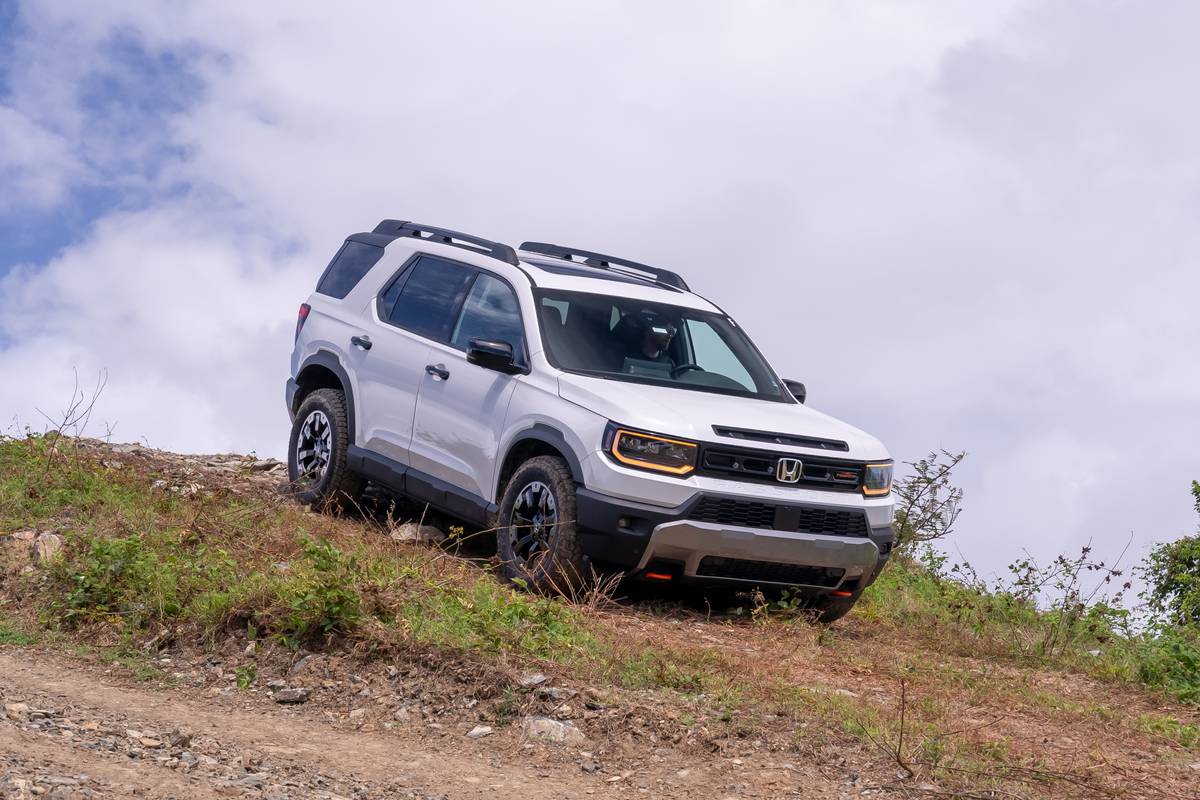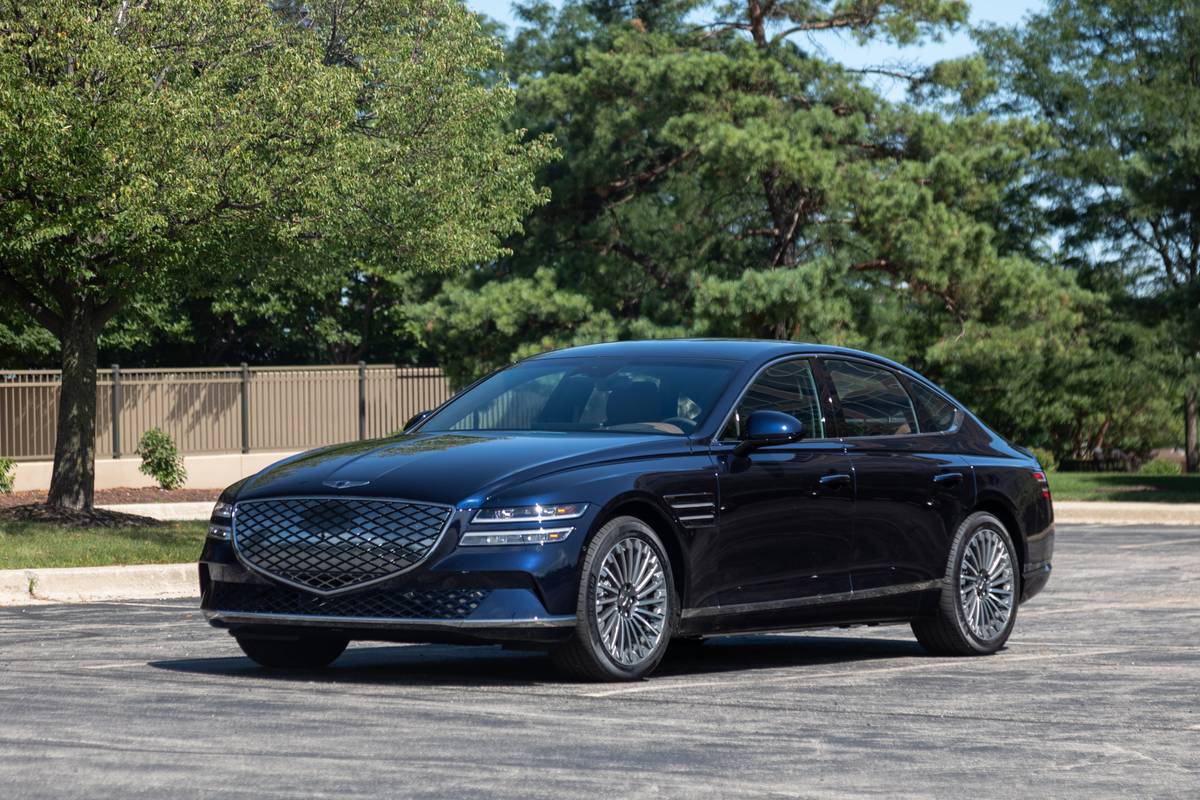The Top 10 Most Honorable Japanese Pickups
Whether you're a dedicated domestic loyalist, a fan of import trucks or an impartial buyer looking for the best rig for the money, there's no denying that Japanese pickups have had an ever-lasting impact on the American truck market.
Here's a look at the Top 10 Japanese pickups that, for better or worse, influenced and paved the way for the import and Detroit-built trucks that followed. For that, we honor them.
No. 10: Honda Ridgeline
Love it or hate it (there’s no in-between), the did what Japanese pickups have consistently done over the years: Break new ground in terms of form and functionality.
The midsize, unibody Ridgeline came to market in 2005 with controversial slab-sided lunar-lander looks and all-wheel drive. It did away with conventional leaf springs in favor of an independent rear suspension that gave it great ride comfort and enough room for an in-bed lockable trunk – the first in a pickup. The Ridgeline also featured a dual-action tailgate that folded down or off to the side, like a door, to allow unimpeded access to the cargo box.
No. 9: Toyota Corona Pickup
Toyota isn’t known for its car-based pickups in the U.S., but a few of its Corona utes found their way from Japan to Hawaii in the 1960s. There, they gained a reputation among American servicemen stationed in the Pacific as cheap but tough and versatile little runabouts.
The Corona was equipped with Toyota’s 2R four-cylinder 1.5-liter engine, rated at 74 horsepower, and a four-speed manual transmission.
No. 8: Mazda Rotary Engine Pickup
In the 1970s, a pickup with a piston-less engine was a completely foreign concept to American truck buyers raised on eight-cylinder domestic trucks. Buyers were just getting used to four-cylinder pickups, thanks to the gas crisis hitting their wallets. Mazda surprised everyone when it introduced the Rotary Engine Pickup.
The Mazda REPU sold in the U.S. from 1974-77 was based on Mazda’s popular B-Series line of small trucks. The REPU featured a two-rotor, 1.3-liter Wankel engine rated at 110 hp and paired with a four- or five-speed manual or a three-speed automatic transmission. When other pickups were running out of steam at 5,000 rpm, the REPU was just getting warmed up; it could hit well over 7,000 rpm. Combined with a super-short 4.63 final drive ratio and gobs of torque, the REPU was the street-performance pickup of its day, yet it could haul up to 1,400 pounds of payload.
At about 16 mpg, the REPU wasn’t as fuel-efficient as other trucks in its segment, and Mazda discontinued the truck when the gas crisis killed sales. Only about 15,000 were built and sold.
No. 7: Toyota Stout
The first true truck Toyota sold in the U.S. was the 1964 Stout. It was larger than the Datsun 320 pickup it competed against, but its bigger dimensions handicapped its 85-hp, 1.9-liter four-cylinder pushrod engine. It didn’t help that it wasn’t stylish-looking either.
Its successor, the Toyota HiLux, would gain a reputation for being faster and stronger, but the Stout was the first step Toyota took toward making the best-selling small truck in the U.S.
No. 6: Toyota T100
Just as the Stout was the precursor to Toyota’s success in making tough and reliable small trucks, the Toyota T100 was the company’s first step toward building a full-size pickup. Unfortunately, it was also plagued by many of the same market challenges the Stout had failed to overcome decades earlier.
The T100 struggled even before the first truck was built. The idea was caught in a tug-of-war between Japanese executives who thought building a full-size truck was a huge risk and American staff who believed they needed an entry in this critical vehicle segment. The result was a compromised pickup that was smaller than half-tons from Chrysler, Ford and GM, and was only available with a V-6 at a time when American full-size-truck buyers wanted V-8s. It was also relatively expensive, imported from Japan and subject to the 25 percent "chicken tax" on foreign-built pickups.
The 1993 Toyota T100 was only available in a regular cab version that could seat three people. Its 150-hp, 3.0-liter V-6 was panned for its weak acceleration and lack of power. Toyota tried to respond to its critics and lack of buyers by adding an extended cab version in 1995, but it never climbed above 38,000 sales. Still, the T100 pointed the way later trucks from Nissan and Toyota would follow – full-size and built in the U.S.A.
No. 5: Subaru Brat
Sales of domestic coupe-utility pickups, like the Ford Ranchero and Chevrolet El Camino, were just starting to slip when Subaru’s Bi-drive Recreational All-terrain Transporter went on sale in 1977. The car-based Brat was built for people who wanted to mix their active lifestyles with fuel-efficient hauling. It featured part-time four-wheel drive that could be shifted between two- and four-wheel drive on the fly. It also featured iconic backward-facing seats behind its regular cab that allowed two passengers to experience the same ride as the cargo.
The Brat’s four-cylinder, horizontally opposed 1.6-liter engine was rated at 67 hp and was only available with a four-speed manual transmission.
Former President Ronald Reagan owned a 1978 Brat that he used to tend to his ranch in Santa Barbara, Calif. You can't get more red-blooded American than the Gipper.
No. 4: Nissan Hardbody
The Nissan Hardbody was Nissan’s sixth-generation pickup sold in the U.S. The Hardbody was the successor to the Datsun 720, and it became well-known for its tough truck styling and dependability.
The Hardbody went on sale in 1986 and was one of Nissan’s best-selling products, averaging 100,000-plus sales annually during its run. The Hardbody was also one of Nissan’s first pickups to be built in the U.S., which allowed it to avoid the so-called “chicken tax” that added a 25 percent tariff to pickups imported from Japan and other countries.
No. 3: Nissan Titan
Nissan became the first Japanese automaker to build a truly competitive full-size pickup when it introduced the .
The Titan met about 80 percent of half-ton buyers’ needs with its 300-hp, 5.6-liter V-8, an advanced five-speed automatic transmission and a choice of extended cab or crew cab configurations. It quickly gained a loyal following, but later years' sales were hampered by reliability issues with early trucks.
No. 2: Fourth Generation Toyota Truck / HiLux
The Toyota truck that really cemented Toyota’s spot in the hearts and minds of American small-truck buyers was the fourth-generation HiLux — or simply the Toyota Truck, as it was called in the U.S.
The 1984-88 Toyota Truck and its famed 2.4-liter four-cylinder 22R and 22R-E engines gained untarnished reputations for reliability and durability at an inexpensive price. With aftermarket wheels and a light bar, the Toyota Truck was lusted after by guys who saw Marty McFly drive away in one in “Back to the Future.”
Toyota still lives off the goodwill the Toyota Truck generated for the brand.
No. 1: Datsun Pickup
Nissan was the first Japanese automaker to sell a pickup in the U.S., at a time when the roads were filled with big American cars and trucks. V-8 engines were the norm, and the worth of a car was often measured by the size of its tailfins.
Onto this scene emerged the tiny Datsun 1000 compact pickup — the first truck of its kind. Although the Datsun 1000 only featured a 37-hp, 1.0-liter four-cylinder engine and a quarter-ton load capacity, it was a precursor of better things to come. In 1960, its engine size increased to 1.2 liters, and its horsepower nearly doubled to 60.
A new Datsun 320 pickup hit American shores in 1961, but it was the introduction of the Datsun 520 pickup in 1965 that led to a sales jump of then-historic proportions, from a few hundred units per year to more than 15,000. In its first year, the Datsun 520 pickup became the top-selling imported pickup in the United States — a title the company held onto for more than a decade.

Featured stories

This or That: 2026 Honda Passport TrailSport Elite Vs. 2025 Toyota 4Runner TRD Off-Road Premium


2025 Porsche Panamera GTS Review: Continental Cruiser

